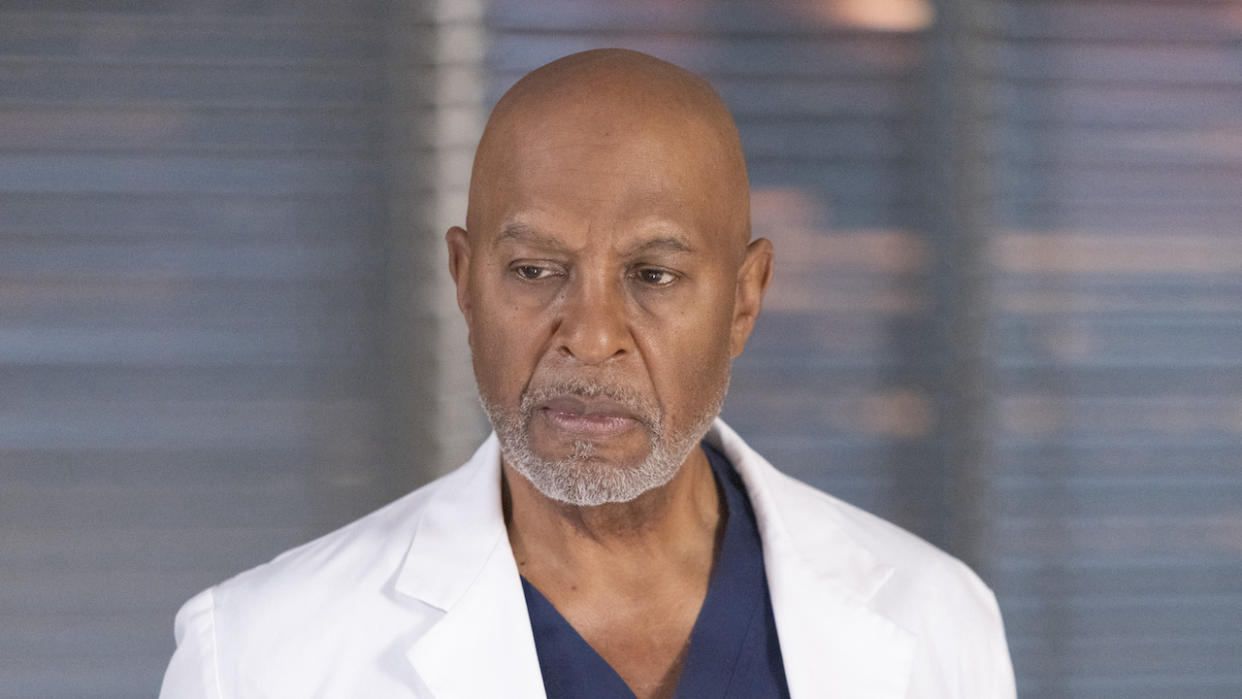‘We Need To Keep Twisting The Knife’: Grey’s Anatomy Showrunner Gets Real About How They’re Trying To Make Us Cry

We all remember where we were when McDreamy died. Or the guttural scream we unleashed when George wrote “007” with his finger on Meredith’s palm after he’d been hit by a bus. We may have even shed some tears in recent weeks when Simone hit rock bottom over a patient who reminded her of her mom. That may all sound a little overdramatic, but for many Grey’s Anatomy fans, it’s our truth, and it is definitely not an accident. Showrunner Meg Marinis opened up about the effort that goes into striking that emotional chord with the audience, including the tear-inducing formula the writers use.
In its 20th season, Grey’s Anatomy maintains the title of longest-running primetime medical drama in TV history, and Meg Marinis — who succeeded Krista Vernoff as showrunner and has worked on the series since Season 2 — indicated there’s a formula that might have helped them get there. During a panel at SeriesFest (via AV Club), Marinis revealed the writers’ three-pronged approach to the perfect scene:
We’ve always said the perfect Grey’s Anatomy scene has medicine, obviously, it brings laughs, and there’s a huge emotional component to it. When drafts are turned in, we’re all looking at them, and often, someone says that we need to keep twisting the knife somewhere because ‘I’m not crying yet.’
So basically if you’ve ever been watching Grey’s Anatomy and felt like the writers were just stabbing you in the heart over and over, that’s exactly what they were going for. But nobody would stick with a show that was just simply depressing, so it makes sense that there would have to be plenty of humor and — of course, being a medical drama — some wild medical cases.
Apparently the ability to gage just how successfully they’re hitting those three marks has become a lot easier in the post-COVID era, with cast and crew able to gather in the same room to read through episodes. Meg Marinis continued:
I’m so glad we’re back to in-person table reads, too, because you can’t capture the feeling on Zoom of two actors being able to turn in this emotional performance. I look around the room at the cast, the PAs, and others who are watching and notice if their mouths turn up or if they’re shocked and teary. The directors and actors elevate what we put in our script. We give them a blueprint, but they take it 10 steps ahead. And then, editorial and post-production work dials it up, too.
That is certainly a large number of people tasked with making us cry, but if that’s what has to be done to keep us invested 20 seasons in, you’ll hear no complaints from me.
Grey’s Anatomy is on the back half of its current season, but thankfully it’s already been renewed for Season 21, so we can sit back and worry about nothing except the stories playing out on our screens.
If you want to relive some of Grey’s Anatomy’s best episodes, all 20 seasons can be streamed with a Hulu subscription, and if you don’t have the time or willingness for all 400+ episodes, check out these starting points of the best Grey’s Anatomy eras. Then be sure to catch new episodes at 9 p.m. ET Thursdays on ABC.

